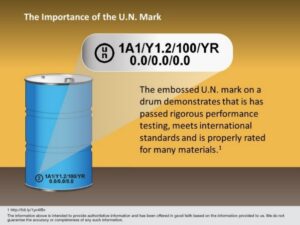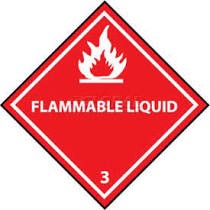
The following article was published in TRANSCAER’s September newsletter.
Steel drums are widely used to package and ship Flammable liquids, also referred to as ignitable liquids. The labeling and marking of the drum provide clues to help characterize its contents. Permanent markings can be found on the side and bottom of the drum that signify the performance rating which will help you to decipher the Hazard Group authorized for the drum in question and the specific gravity of the product inside it. Drums will also be labeled in accordance with The Department of Transportation (DOT) specifications for “labeling” of Flammable liquids.
Department of Transportation Labeling Requirements
The DOT specifies the size, design and color of the label that should be placed on a drum containing regulated Flammable liquids. Steel drums containing Flammable liquids should comply with §172.419 of the Code of Federal Regulations, Title 49 and visibly display the following label:

Department of Transportation and United Nations Marking Requirements
Permanent markings on the side and bottom of a steel drum signify compliance with DOT and United Nations (UN) test requirements for hazardous materials. 1A1 indicates a tight head steel drum, the Y mark indicates that the drum is authorized to carry Group II and Group III liquid materials. The number 100 in this example indicates the hydrostatic test pressure (in kilopascals) used to qualify the drum. The test pressure is determined by the vapor pressure of the lading at 50 or 55-degrees C. Steel drums can be marked as high as 350 kPa. The thickness of the drum’s bottom/body and top is also indicated in mm.

For additional information:
- Codes and Regulations:
- Resources:

